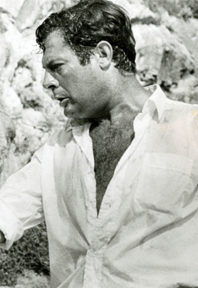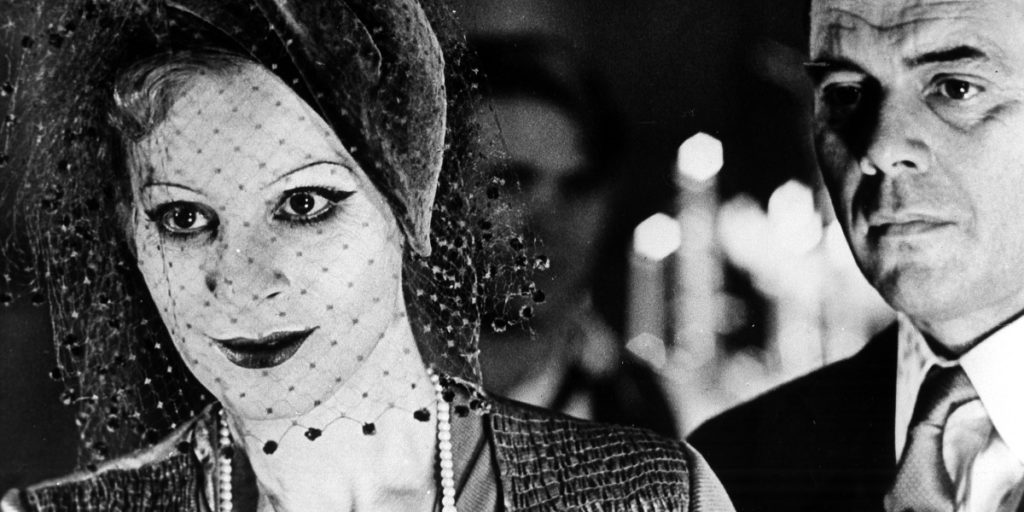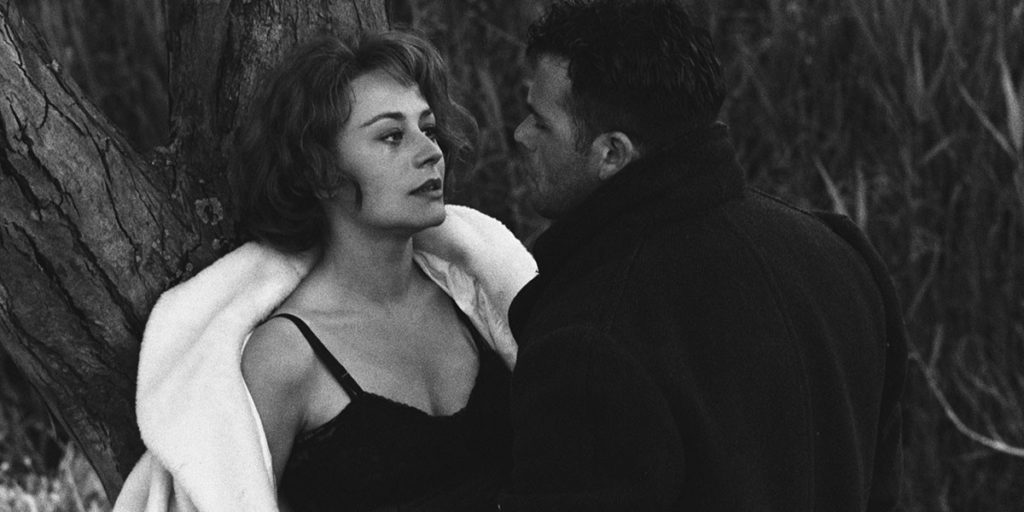
What separates Luchino Visconti from other Italian directors? He, like every director working in that country, had his share of Neorealist films. Everybody in his generation walked away from that movement eventually, in their own time. Those auteurs instead focused on the modernization, celebrity, surrealism, and sadism that Italian culture of past and present represented. His colleagues zeroed in on those extremes. But he had his feet in his realist past and the lushness that his later movies expressed. This balance is integral to him.
Visconti arguably invented Neorealism and would return to it from time to time. He released Rocco and His Brothers in 1960, the genre’s last gasp. The movie focuses on Rosaria Parondi (Katina Paxinou) and her five sons, including Rocco (Alain Delon) and Simone (Renato Savlatori). They moved from Sicily to Milan, following a Western trend of moving to urban areas. And in the big city Rocco and Simone find love. This is typical of Visconti’s films having their share of romantic subplots that have its tragic complications.
As the Parondis try to endure their troubles Visconti throws every theme at us without having his movie go awry. There’s the colourism that the family experience, as a Milanese calls them Zulus. Some of the brothers assimilate despite this discrimination, but the film then zeroes in on the brothers who don’t. Visconti also subjects the brothers under his homoerotic gaze. Simone is a boxer and we get to see him work. Visconti eventually tweaks these themes and masculinity in general in his future films.
Men deal with constant change in movies but Visconti depicts that struggle with a deft hand. That is especially true in The Leopard where he switches gears from showing Sicily’s poorest to its richest. It is also arguably the most beautiful film anyone could make. It’s about, and this is a mouthful, Don Fabrizio, Prince of Salina (Burt Lancaster) and his large family. Here he reluctantly embraces a united Italy in the 1860s. He does so despite his loyalty to the Bourbon Kingdom of Sicily.
Other critics write about The Leopard as if it is about downfall but it feels more like a grand tour. Visconti evokes Cezanne as he captures Sicily’s grand mountains. He shoots these golden hills, which is unlike the arid island that we see in other movies about Southern Italy. These mountains are where the Prince learns compromise, where he approves of a marriage signifying the new Italy. It’s between his nephew, the Count of Tancredi (Alain Delon) and a young bourgeois woman, Angelica Sedara (Claudia Cardinale).
The Prince basically arranges the marriage between two people who love each other anyway. He organizes a party where Angelica comes out into high Sicilian society. And is it arguable the best party anyone can film. The Prince’s children socialize with generals and debutantes and socialites. This is the Victorian Era, a time that some people would understandably fantasize about, aspiring to these riches. Visconti’s point is that we can’t return to these times. Nonetheless, in what he’s showing, he takes us back in time.


